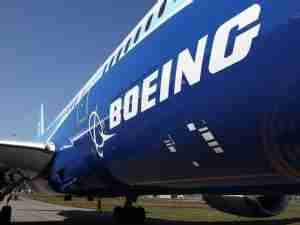Two air packages containing bombs -- both sent from Yemen and addressed to synagogues in Chicago -- were intercepted in Britain and Dubai last week.
One of the packages was found on a United Parcel Service cargo plane at East Midlands Airport, north of London. The other was discovered in a computer printer cartridge in a parcel at a FedEx facility in Dubai.
The plot could speed up calls for wider use of sophisticated imaging technology designed to detect explosives, which is not standard, but freight firms are reluctant to bear the full cost.
"The technology used for screening of cargo, typically by X-ray, ... doesn't have explosive detection capacity, but it does enable them to find most things," said Norman Shanks, a former head of security at the British airports operator BAA.
"But cleverly concealed devices like this might suggest that there will have to be an ability for an explosive detection capacity such as CT (computed tomography)," said Shanks, who now works as a specialist aviation security consultant.
Tomography is a medical scanning technology designed to display sectional images. Its attraction for security firms was highlighted when France's Safran paid $580 million a year ago for 81 percent of GE Homeland Protection, which supplies the technology.
British Home Secretary (interior minister) Theresa May said security around air cargo arriving in Britain was being reviewed, but stopped short of saying a tighter system was being planned.
Marco Sorgetti, director-general of CLECAT, a European association of freight-forwarding companies, said there were fears of a knee-jerk reaction to the security scare.
"Although this is a clear example where targeted investigation pays, some will say this is why we need 100 percent scanning. What happened doesn't make it (100 percent scanning) one inch better in terms of risk analysis, but emotionally people will say we have to do this."
Freight firms clashed with U.S. and European policymakers last year over calls for 100 percent scanning of sea containers. Plans to introduce full scanning from 2012 were postponed.
Shippers say targeted intelligence work is more effective than faith in a blanket technological approach with no guarantee of success, given the minute quantities needed to pose a threat. They say the intelligence tip-offs linked to the discovery demonstrate that existing systems work.
But some analysts say the cargo industry has for long enough escaped the stringent attention given to passenger security, or freight carried in the cargo holds of passenger airliners.
"Although there has been a lot of talk about the air cargo security regulations, most of these regulations affect the cargo that is placed on commercial passenger aircraft, not all-cargo operators," said Jeff Price, lead author of "Practical Aviation Security: Predicting and Preventing Future Threats".
Two-Tier System
The World Customs Organization distinguishes between screening -- risk assessment based on the origin and other information; scanning -- which involves X-ray or gamma-ray machines scanning closed packages; and full physical inspection.
Shanks said introducing full scanning globally would be unaffordable -- but authorities may toughen a two-tier approach:
"I think it will have to be affordable for packages of cargo coming out of countries that are known in the past to have caused problems. This will have to be a cost that is either picked up by the state itself or added onto the shipment."
FedEx and UPS, respectively the world's largest and second largest carriers of air freight by volume, are just the tip of a multi-billion-dollar logistics industry responsible for keeping global supply chains running smoothly.
"In the past five or six years we saw logistics costs go up due to the movement of production pla






